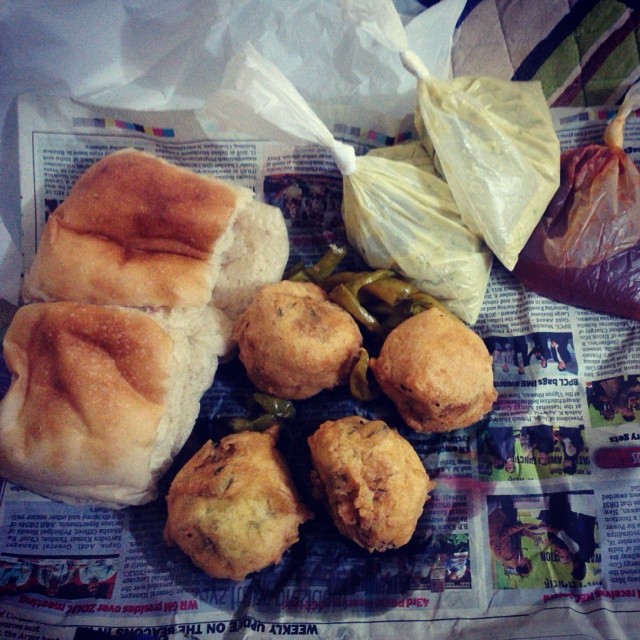B for Bharathanatyam
Bharatanatyam is the dance of Lord Shiva, an art form originated in TamilNadu, a refurbished version of an ancient dance form - sadhir. This dance form is known for its grace and poise. Each movement is based on Bhavam, Ragam and Talam (and hence the Bha-ra-ta-Natyam). In the days of kings and queens, the thasis (or the courtesans) were required to be trained extensively in this art form. What was earlier meant to be performed at temples slowly became a court performance for the kings, and later became an art form that spread far and wide.
There are 5 major dance forms, which are the manifestations of the pancha bootham. The Bharatanatyam is a manifestation for fire, while Kuchipudi is that of the earth, Kathakali for sky, Mohiniaattam for air and Odissi for water. As with any other aspect of the universe, the Bharatanatyam also has the masculine form - the thandavam and the feminine form - lasya (grace).
The Kalakshetra, a prominent dance school in Chennai, was set up by Rukmini Arundale in 1936 and this helped train men too!
The Bharatanatyam was made popular and even a layman learnt to appreciate this art and that credit goes to the movies. And the video below is one of my favorites, a dedication to a brilliant actor and dancer.
There are 5 major dance forms, which are the manifestations of the pancha bootham. The Bharatanatyam is a manifestation for fire, while Kuchipudi is that of the earth, Kathakali for sky, Mohiniaattam for air and Odissi for water. As with any other aspect of the universe, the Bharatanatyam also has the masculine form - the thandavam and the feminine form - lasya (grace).
The Kalakshetra, a prominent dance school in Chennai, was set up by Rukmini Arundale in 1936 and this helped train men too!
The Bharatanatyam was made popular and even a layman learnt to appreciate this art and that credit goes to the movies. And the video below is one of my favorites, a dedication to a brilliant actor and dancer.


Informative and loved reading through it :)
ReplyDeleteKeep smiling,
Lakshmi
Thanks Laks! :)
DeleteSuper Deepa :) Indeed it was informative :)
ReplyDeleteNandri nandri :)
DeleteFantastic !! Though I knew about 5 major forms and the masculine form. I wasn't aware of the feminine form - lasya, thanks for giving us such an informative post :)
ReplyDelete:-) Thanks darlin
DeleteWonderful . Informative post. Keep up :)
ReplyDeleteThanks Deepak :)
DeleteIt's good to visit a blog from another culture. I love the photo of the oil lamp. Good luck with the A-Z challenge. http://lizy-expat-writer.blogspot.com.es/
ReplyDeleteThanks Lizy. Visited your blog too. Good luck with your book!
DeleteDemo credit "Padmini"ku kodukkala?
ReplyDeleteIllena nara nara nu yaravdu kadichuduvaalo? :P
Deleteinformative!!thank you!!
ReplyDeleteThanks!
DeleteSuper ! For some reason, I expected this video ! Whattae
ReplyDeletePrashu - namba mind ellam same same working no? <3
DeleteMy mom was a Bharatnatyam dancer before marriage and her fave actor was Sivaji Ganesan. Shall show her this video!
ReplyDeleteOh that's lovely Sumita. Not just the video, if you get hold of the movie, do see it. The movie is Thillana Mohanambal. (The URL of this blog is inspired from a character in that movie)
DeleteOh ok...was wondering! :) Info on the dance form was interesting. What is your chosen theme for the challenge?
DeleteYow.. Thanks Ash :D
ReplyDeleteA Precise post about our dance form- Bharathanatyam. Happy to see you giving life to this fading dance form by blogging about it! And Deepa yet again in tune with your URL.. Jiljilramamani :P a character in the film from which the video was taken as an excerpt.. :D JK :D
ReplyDeleteBharatanatyam in the olden days were not meant for all.. It was only for the dasis. Not every one performed in the temples. There were a sect of Dasis who were meant to perform in the temples and others to entertain the kings. The history of Bharatnatyam is awesome.!:)
ReplyDeleteNice info though..:)